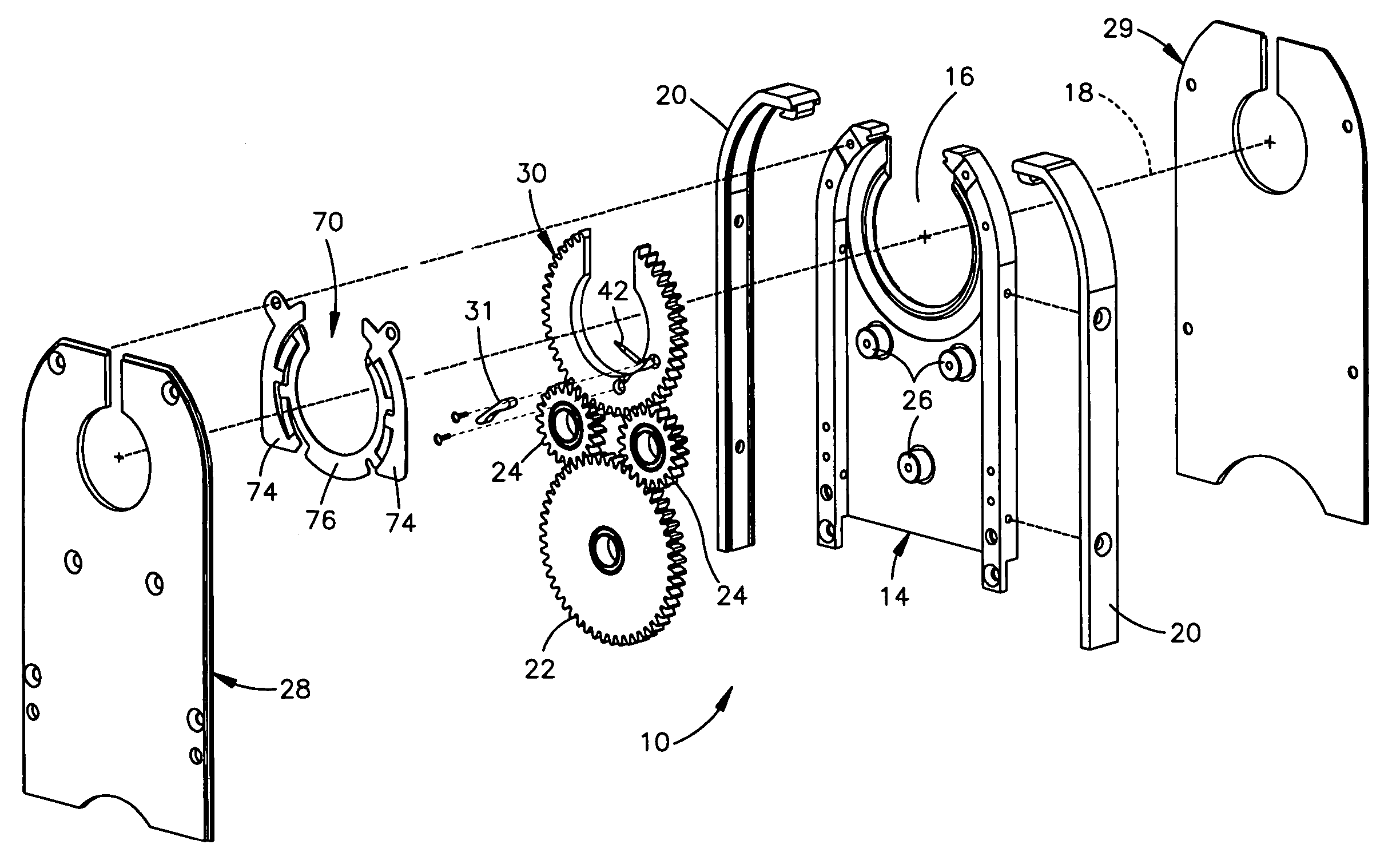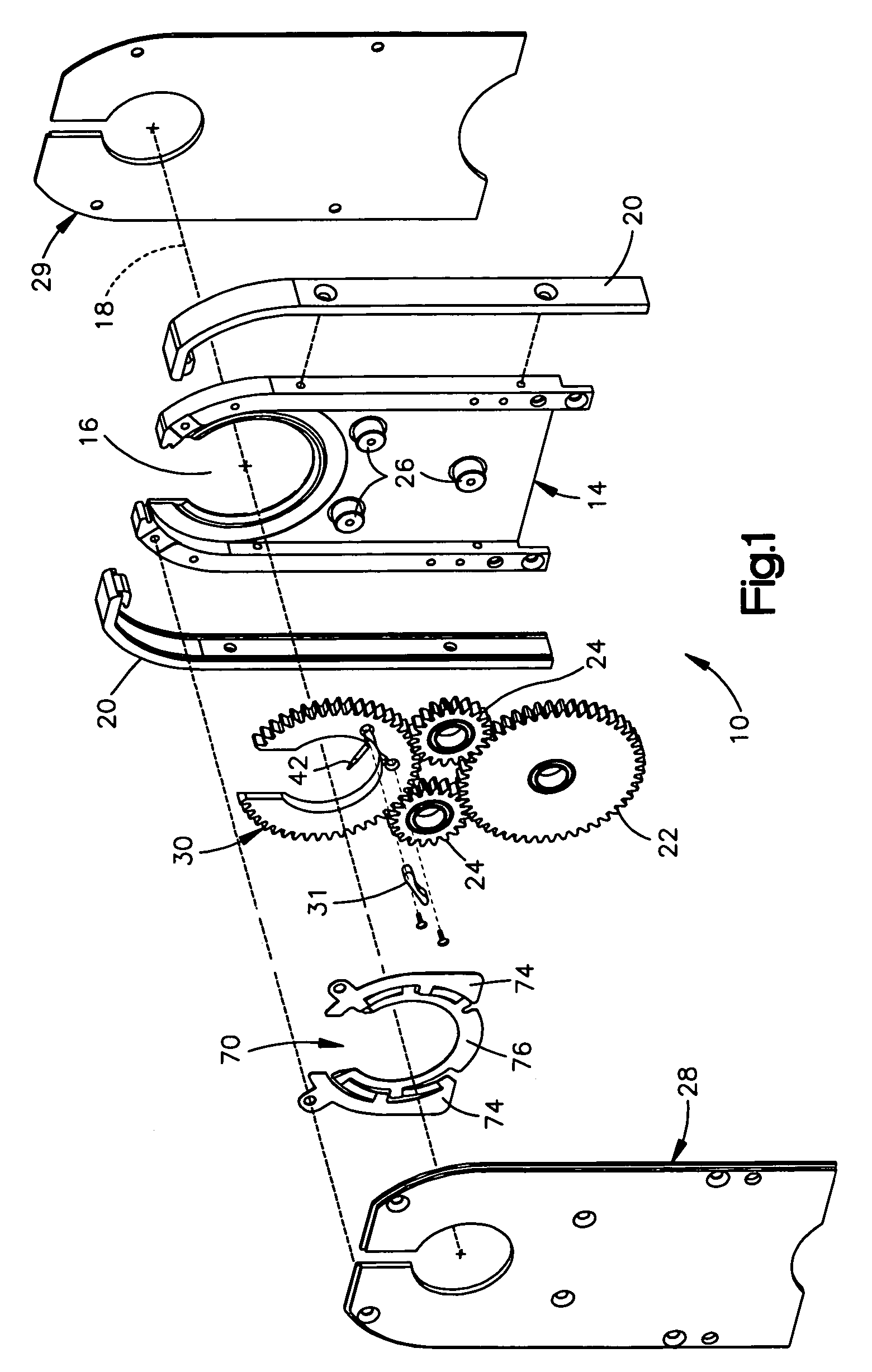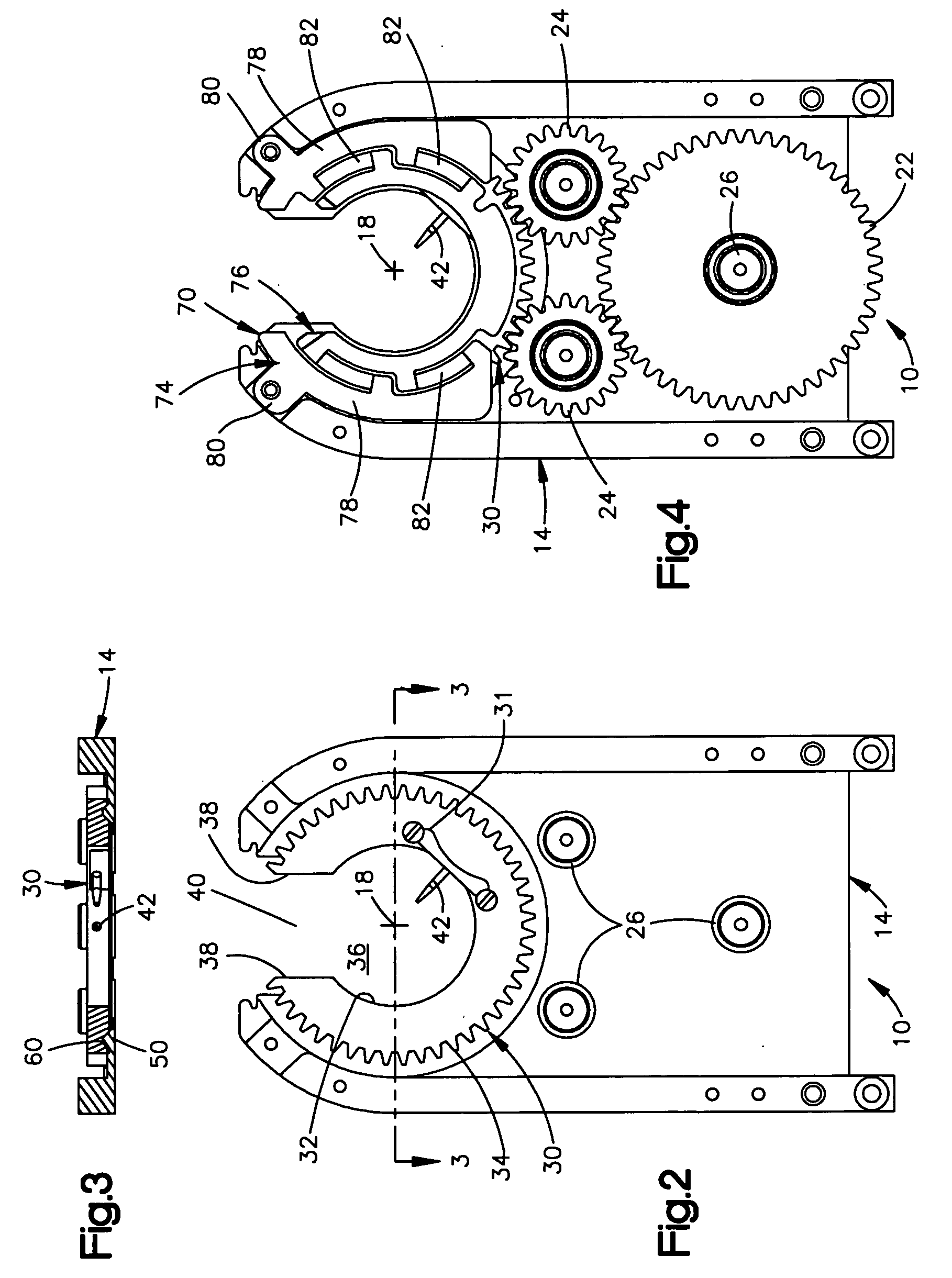Orbital weld head
a weld head and orbital technology, applied in the direction of soldering apparatus, manufacturing tools, auxillary welding devices, etc., can solve the problems of reducing the accuracy of welds, and reducing the number of workpieces with known weld heads. achieve the effect of more accurate and consistent welds
- Summary
- Abstract
- Description
- Claims
- Application Information
AI Technical Summary
Benefits of technology
Problems solved by technology
Method used
Image
Examples
first embodiment
[0027] The present invention relates to an orbital weld head and is applicable to weld heads of varying and different constructions. As representative of the invention, FIG. 1 illustrates a portion of an orbital weld head 10 in accordance with the invention.
[0028] The weld head 10 includes an insert 14 that serves as the base of the weld head, supporting many of the other parts of the weld head. The insert 14 has a generally circular work opening 16 centered on an axis of rotation 18 (FIG. 2) of the weld head 10. Two electrically insulating edge pieces 20 are secured to the insert 14, in a manner not shown.
[0029] The insert 14 may be made from plastic but is preferably made from an electrically conductive metal, such as stainless steel, copper, or bronze. Metal typically can absorb more heat than plastic without deforming, and metal is more stable when it does absorb heat. As a result, the insert 14 if made from metal can absorb a relatively large amount of heat. This can help enab...
second embodiment
[0075]FIG. 7 illustrates a portion of a weld head 10a in accordance with the invention. In the weld head 10a, the positions of the boss and the track are reversed. Specifically, the insert 14a has a trapezoidal groove or track 60a, while the rotor 30a has a trapezoidal boss 50a that is received in the track. The engagement of the boss 50a of the rotor 30a in the track 60a of the insert 14a positions the rotor relative to the insert. This engagement also maintains electrical contact between the rotor 30a and the insert 14a, even when the parts are heated and expand unevenly, as described above.
[0076]FIGS. 10 and 11 illustrate an alternative one-piece brush / spring or brush 90. The brush 90 is formed as one piece from an electrically conductive material, such as metal. The brush has an overall C-shaped configuration when viewed in plan as in FIG. 10.
[0077] The brush has an inner portion, or brush portion 92, and an outer portion, or spring portion 94. The inner portion 92 of the brush...
PUM
| Property | Measurement | Unit |
|---|---|---|
| Temperature | aaaaa | aaaaa |
| Temperature | aaaaa | aaaaa |
| Angle | aaaaa | aaaaa |
Abstract
Description
Claims
Application Information
 Login to View More
Login to View More - R&D
- Intellectual Property
- Life Sciences
- Materials
- Tech Scout
- Unparalleled Data Quality
- Higher Quality Content
- 60% Fewer Hallucinations
Browse by: Latest US Patents, China's latest patents, Technical Efficacy Thesaurus, Application Domain, Technology Topic, Popular Technical Reports.
© 2025 PatSnap. All rights reserved.Legal|Privacy policy|Modern Slavery Act Transparency Statement|Sitemap|About US| Contact US: help@patsnap.com



